Australian members of Amex’s Membership Rewards program can convert their credit card points into rewards with up to 15 transfer partners. Among them, there are two hotel reward programs and up to 12 airline partners. But with so many options on the table, what makes each program stand out?
Undoubtedly, the best option for one journey may not be the most rewarding for the next. And, of course, different programs have different sweet spots – and some are more attractive than others for comparable bookings. So here’s a look at where each Amex transfer partner can have its advantages – and where you might find greater value by utilising one of your other options instead. We’ve published this guide previously, but we’ve updated it to reflect the state of play in 2025.
Air New Zealand Airpoints
| Conversion rate: | Transfer time: |
| 200 MR points = $1 in Airpoints Dollars | Usually by the next business day |
Pros:
- Redeem for any Air New Zealand flight where seats are on sale for money. There is no ‘reward seat’ availability to navigate.
- Airpoints Flexipay allows split payment between Airpoints Dollars and actual dollars, so you don’t need to have enough Airpoints Dollars to pay for the entire journey you want to book.
- You can book flights across the global Star Alliance network at fixed redemption rates, subject to reward seat availability.
- Airpoints Dollars can be spent on board Air New Zealand to purchase snacks and drinks. It’s a handy way to use up small balances of Airpoints Dollars.
- If you’re already in the Airpoints ecosystem, Amex can be a handy way to top up your existing balance for simplicity. Especially so if you wanted to cover the entire ticket with Airpoints Dollars.
Cons:
- Redemption rates on Air New Zealand are always tied to the commercial ticket price, so the cost of redeeming a flight is variable.
- There are no ‘sweet spots’ or ‘point hacks’, because one Airpoints Dollar equals one dollar towards a fare. You instead need to rely on airfare sales to book flights using fewer Airpoints Dollars.
- Airpoints now operates entirely in NZD. Previously, Australian members would accrue Airpoints Dollars in AUD, but now, all Airpoints Dollars are in NZD.
- There’s no gain in value by converting from Membership Rewards to Airpoints. That’s because 200 MR points already equal one dollar in Amex statement credits by using points to pay for a purchase. At the same time, 200 MR points equals one Airpoints Dollar in NZD, which is currently valued at only AU$0.93. So, by transferring points from Amex, you’re locking yourself into the one airline program and reducing the value of those same points, whereas a better return would be to buy a ticket on any carrier using American Express and to then offset that charge with points.
- Transfers from MR to Airpoints may take up to 36 hours to process – they’re not usually instant.
The British Airways Club
| Conversion rate: | Transfer time: |
| 2 MR points = 1 Avios | Usually instant |
Pros:
- The newest airline transfer partner to join Amex Membership Rewards, bringing with it the competitive 2:1 conversion rate.
- Lucrative reward seat pricing on Qantas domestic and short-haul flights. For instance, Sydney to Auckland for just 22,000 Avios in Business Class (+$185.49), or Brisbane to Melbourne for 16,500 Avios in Business Class (+$52.22).
- Greater access to British Airways reward flights. This can be useful for flying Sydney to Singapore, or Sydney to London.
- Flexibility to convert points to other Avios-based frequent flyer programs, such as Qatar Airways Privilege Club, on a 1:1 basis.
- Transfers from Membership Rewards are usually processed instantly.
Cons:
- Other than through American Express, it’s generally quite hard to earn BA Avios in Australia. One key option for business owners is PayRewards, but for individuals, the next-best option is to subscribe to buy Avios. Of course, that’s much less effective than earning points from spends you might already be making!
- BA levies carrier charges on its reward flights. And because BA is based in the United Kingdom, you can expect to pay hefty taxes on top when departing the UK in the form of Air Passenger Duty (APD). APD rates are highest in premium cabins and on lengthiest longest long-haul flights. Unfortunately, this means London-Singapore – the first stop en route to Australia – falls into the priciest APD band by distance, and if you’re flying up front, it’s a double whammy.
Cathay (formerly Asia Miles)
| Conversion rate: | Transfer time: |
| 2 MR points = 1 Asia Mile | Usually instant |
Pros:
- Redemption rates on Cathay Pacific and oneworld Alliance flights are respectable and competitive.
- Cathay Pacific releases many more reward seats to members of its own loyalty program compared to what’s bookable through most other partner frequent flyer programs.
- Through Cathay, you can also book many carriers outside of oneworld. For example, Air Canada, Air China, Air New Zealand, Austrian Airlines, Bangkok Airways, LATAM, Lufthansa, Shenzhen Airlines and SWISS.
- Transfers from Amex are generally processed straight away. That’s handy if you want to pounce on a reward seat you’ve just found.
- You can also use miles to upgrade on Cathay Pacific flights and to book round-the-world tickets across oneworld Alliance airlines.
Cons:
- While some partner airline flights can be booked online, many still require a phone call.
- More broadly, Cathay miles are harder to earn in Australia than Qantas Points. This means that while the redemption rates may be attractive, there aren’t as many avenues beyond credit card spending through which you can grow your total Cathay balance.
American Express Platinum Card
Emirates Skywards
| Conversion rate: | Transfer time: |
| 3 MR points = 1 Skywards mile | Usually by the next business day, but currently suspended |
Pros:
- Enjoy broad access to reward seat availability on Emirates flights in Economy Class and Business Class. More specifically, you’ll have access to more reward seats than are opened to partner programs like Qantas Frequent Flyer.
- Spend miles on a bespoke collection of carriers. In Australian skies, this includes Qantas, as well as Air Canada, Air Mauritius (flies to Perth), Garuda Indonesia, Japan Airlines, Jetstar, Korean Air, Malaysia Airlines, South African Airways and United Airlines. Other interesting partners include Aegean Airlines, Bangkok Airways, easyJet, flydubai, GOL, TAP Air Portugal and more.
- Competitive redemption rates for flight upgrades with Emirates – arguably, the best way to redeem Skywards miles. You can even upgrade at check-in or on board to the last available seat, if you couldn’t find availability before that.
Cons:
- IMPORTANT: The ability to convert from Amex to Emirates Skywards is currently suspended while Skywards implements system upgrades. This is expected to remain offline until at least late June, during which time, no miles can be converted to Skywards from Amex.
- Emirates has recently restricted First Class reward bookings to Skywards members with Silver status and above. This doesn’t impact upgrades to First Class, but it means that unless you have Skywards status, you can’t book Emirates First Class classic flight rewards using Skywards miles.
- At the time of writing, Emirates Premium Economy cannot be booked using miles, and upgrades to Premium Economy also aren’t available.
- The extra reward seats mentioned in the ‘pros’ section are generally ‘Flex’ bookings, which require substantially more miles than standard classic flight rewards.
- Emirates applies some of the highest carrier charges in the industry on flight redemption bookings. For instance, total fees, taxes and carrier charges are almost AU$3,500 per person to fly Sydney to Paris return in Emirates Business Class – on top of the miles.
- Carrier charges on some partner airline flights can also be high. Co-payments on Qantas domestic bookings, for instance, can often be $30-40 extra per person per flight, compared to redemptions using Qantas Points.
- The 3:1 conversion rate from Membership Rewards is quite uncompetitive, compared to 2:1 for most other partners. It means you need 50% more Amex points to receive the same number of miles compared to those other programs.
- Emirates Skywards miles have a hard expiry date – not rolling like Qantas or Velocity.
- Transfers from Amex aren’t usually instant, and you can only link one Membership Rewards account to your Skywards profile. If you have multiple Amex accounts, this can impact your ability to earn Skywards miles.
Etihad Guest
| Conversion rate: | Transfer time: |
| 2 MR points = 1 Etihad Guest mile | Up to seven business days |
Pros:
- A more attractive transfer rate of 2:1, compared to Amex’s other UAE-based partner, Emirates.
- In general, there isn’t as much competition for premium award seats compared to other airlines. It’s one benefit of Etihad having a smaller network and not being part of a global alliance. Personally, this meant I could secure Business Class seats from New York to Sydney (via Abu Dhabi) at a peak time when no other airline had availability. Since then, Etihad and Velocity have also ended their partnership and are in the final stages of termination. This means there’ll be even less competition for Etihad reward seats in this market.
- Etihad Guest members can book premium cabin flights on points close to a year in advance. However, those spending points from other programs can only access these cabins one month before departure.
- You can also redeem across a very interesting set of global airlines. Of those flying to Australia, partners include Air New Zealand, Air Canada, American Airlines, ANA, Asiana Airlines, Garuda Indonesia, Hainan Airlines, Malaysia Airlines and SriLankan Airlines (Virgin Australia redemptions conclude at the end of May 2025). Redemptions on Gulf Air, Oman Air and Saudia also provide some interesting options for those already bound for the Middle East.
- It’s easy to redeem small number of Etihad Guest miles. On a recent flight from Abu Dhabi to Melbourne, just 3,000 miles was enough to cover an inflight Wi-Fi pass with unlimited time and data.
Cons:
- Points transfers have the longest potential processing time of any Membership Rewards partner, with up to seven business days needed for points to arrive. In my recent experience, it took four business days – but you have to prepare for it to take longer.
- Etihad levies carrier charges on its reward flights, although they’re not as hefty as Emirates. For instance, the co-pay on a one-way Business Class flight from Abu Dhabi to London is currently 1,205 AED (~AU$510). That amount includes the genuine taxes and fees, as well as Etihad’s carrier charge.
- While reward flights on Etihad and American Airlines can be booked online, other partners are only bookable by phone. In my experience, the phone team is very efficient – but it’s still a hassle versus booking online.
- In Australia, Etihad now flies only to Sydney and Melbourne. This means there aren’t as many local flights on which to redeem a seat versus other Middle Eastern carriers.
- In what many would consider a frustrating change, Etihad miles now expire unless you take at least one flight every 18 months. That’s not to be confused with earning points every 18 months: you actually need to fly.
American Express Business Gold Plus Card
Malaysia Airlines Enrich
| Conversion rate: | Transfer time: |
| 2 MR points = 1 Enrich mile | Up to two business days |
Pros:
- Redeem Enrich miles to travel with Malaysia Airlines and across the oneworld Alliance.
- You can also redeem on other selected partners including Air France, Emirates (Economy and Business Class), Etihad Airways, KLM and Singapore Airlines.
- Redemption rates on oneworld partner flights are quite competitive when flying round-trip. On British Airways and Qantas, Sydney-Singapore costs 125,000 miles return for Business Class (equal to 62,500 miles one-way, when booking round-trip).
- Miles can be used to upgrade on Malaysia Airlines flights.
Cons:
- Reward seat bookings can be a little pricey for travel on Malaysia Airlines itself. A one-way Business Class flight from Brisbane to Kuala Lumpur clocks in at 102,600 miles, one-way. (Rates are lower through Qantas Frequent Flyer, by comparison). Flights from Sydney, Melbourne and Adelaide are more reasonably priced at 75,000 miles one-way for an Enrich Saver award.
- Upgrade awards are also a little pricey from the most affordable fares. Expect to pay up to 75,000 miles for a one-way upgrade on those same routes. Whereas you could simply book Malaysia Airlines Business Class outright from several cities for the same number of miles, without having to buy a paid ticket first. Upgrade rates are more reasonable from higher-priced fares, starting at 20,000 miles on these routes.
- One-way reward bookings on partner airlines cost around two-thirds of the miles needed to fly return.
- Malaysia Airlines no longer flies to Darwin, but still serves Sydney, Melbourne, Adelaide and Perth, and has recently returned to Brisbane.
- Points transfers from Amex can take a couple of business days to process, so if you’ve found a specific reward seat, somebody else may snap the seat up before you get the chance to book it.
American Express Platinum Edge

Qantas Frequent Flyer
| Conversion rate (Membership Rewards Ascent Premium members only): | Transfer time: |
| 2 MR points = 1 Qantas Point | Usually instant |
Pros:
- Australia’s largest airline frequent flyer program with the widest network and range of international partners. Partnerships include all of oneworld plus a range of other strategic tie-ups like Air France, China Airlines, KLM, LATAM, WestJet and more.
- Transfer enough points each year and/or earn points from other sources and achieve Qantas Points Club or Points Club Plus membership. Just be aware that Points Club considers only the first 125,000 Qantas Points of any large transfer – but you can make multiple, separate transfers to get around that. Perks of Points Club and Points Club Plus can include earning Status Credits on eligible Classic Reward flights, lounge access and more.
- Tiered Qantas Frequent Flyer members have access to greater reward seat availability. This includes booking international premium cabin seats earlier than entry-level members and more seat availability in general. Platinum members (and above) can also call Qantas to request additional seats if they can’t find something suitable.
- Book round-the-world flight rewards across oneworld Alliance carriers.
- Despite recent misreporting by a number of other websites, Qantas Frequent Flyer members can still use their points to book Emirates First Class, and can do so regardless of status.
Cons:
- This transfer option is only available to Amex Membership Rewards Ascent Premium members. In other words, you need to have a metal-plated Platinum Card or the invitation-only Centurion Card.
- Qantas is generally increasing its Classic Reward rates from 5 August 2025. This means, in most cases, you’ll need more Qantas Points to book the same flight as before, or to upgrade.
- Qantas members have very little access to reward flights on Qatar Airways, as Qatar makes more seats available to those spending Avios and Velocity Points. With Qatar Airways, premium cabin seats are usually only visible within a few days of departure.
- Carrier charges are payable on Qantas and many partner airline flights. Fees and charges are moderate on Qantas (generally a couple of hundred dollars for long-haul), high on airlines like Air France (~AU$500 from Paris to Hong Kong) and British Airways (circa AU$1,000 in total payables from London to New York, including APD), and highest on Emirates (~AU$1,750 one-way to Paris).
- Travellers without Qantas status may find it harder to secure the most desirable seats on long-haul Qantas flights, given better availability is reserved for tiered members.
Qatar Airways Privilege Club
| Conversion rate: | Transfer time: |
| 2 MR points = 1 Avios | Usually instant |
Pros:
- Good reward seat availability on Qatar Airways flights, especially in premium cabins.
- Great redemption rates for travel with Qatar Airways, when seats are available. One-way Business Class to Europe can be 90,000 Avios – or even less for those with elite Qatar Airways Privilege Club status. Upgrades can also be competitive.
- After sending points across from Amex, you can also transfer points onwards from Privilege Club into other Avios-based programs for greater flexibility.
- Transfers from Membership Rewards are usually processed instantly.
Cons:
- Redemption rates on partner airlines aren’t as lucrative. Qantas Business Class one-way from Sydney to London is 154,500 Avios, for instance. By comparison, Qantas charges 144,600 Qantas Points for the same on its own metal, but will charge 166,300 Qantas Points from 5 August 2025. However, Qantas Points are easier to earn in Australia more broadly.
- Qatar Airways levies carrier charges on its own flights that can be expensive, but aren’t as hefty as Emirates. A recent search for Business Class from Sydney into London and from Paris back to Australia (avoiding UK APD) came with total taxes, fees and charges of around AU$1,300.
- Privilege Club doesn’t have many other Australian partnerships that allow for high-volume earning. However, Avios can be transferred from CommBank Awards, Citi Prestige and PayRewards. But broader earning opportunities are limited.
American Express Explorer Credit Card
Singapore Airlines KrisFlyer
| Conversion rate: | Transfer time: |
| 3 MR points = 1 KrisFlyer mile | Usually instant |
Pros:
- Fantastic reward seat availability, especially long-haul premium cabins between Australia and Europe.
- One of the only programs with access to reward seats in Singapore Airlines Suites, First Class and Premium Economy.
- There are no carrier charges levied when booking flights with Singapore Airlines, although they are passed on from some other airline partners.
- Ability to book flights right across the Star Alliance network, along with other strategic partners such as Virgin Australia.
- KrisFlyer miles can be directly converted into Velocity Points, and vice versa. These transfers are usually processed instantly – as are conversions from Amex to KrisFlyer.
Cons:
- The conversion rate of 3:1 from Amex makes KrisFlyer transfers much less appealing than before, given you now need 50% more Amex points to access the same number of miles as under the previous 2:1 rate.
- KrisFlyer miles have a hard expiry, so you can’t build your balance within KrisFlyer over many years. It’s better to keep points elsewhere and convert as needed, but then conversion rates may change over time.
- Redemption rates on partner airlines can be quite high – particularly when coupled with the 3:1 conversion rate. For instance, Perth to Bangkok (via Singapore) on Singapore Airlines costs 40,500 KrisFlyer miles one-way. But the direct Perth-Bangkok flights on Thai Airways require a hefty 81,500 KrisFlyer miles for Business Class – more than double the rate for booking on Singapore Airlines itself.
- KrisFlyer miles can no longer be used for round-the-world tickets at a fixed rate. You owuld instead need to book flights separately or as a series of connecting journeys, which requires many more miles than the previous fixed-price round-the-world offering.
American Express® Platinum Business Card
Thai Airways Royal Orchid Plus
| Conversion rate: | Transfer time: |
| 2 MR points = 1 mile | Up to five business days |
Pros:
- Royal Orchid Plus has competitive redemption rates with no carrier charges on Thai Airways flights. For instance, fly Sydney or Melbourne to Bangkok in Business Class for 65,000 miles one-way.
- Book Star Alliance flights at rates generally competitive with KrisFlyer. But these require fewer Amex points overall given the more attractive 2:1 transfer rate for Thai ROP, versus 3:1 from Amex to KrisFlyer.
- Thai has made improvements to its website which now allow some partner airline flights to be booked online from ports other than Bangkok. Previously, these were only bookable by phone.
Cons:
- As noted, phone calls are still required for many partner airline flight bookings.
- Thai Airways doesn’t have its own Australian airline partner, meaning fewer opportunities for spending smaller remaining volumes of miles. And of course, this also means fewer opportunities to earn miles compared to programs based locally.
- Transfers can take up to one business week, so if you’re found a reward seat, it may not still be there once your miles finally appear.
Virgin Atlantic Flying Club
| Conversion rate: | Transfer time: |
| 2 MR points = 1 Virgin Point | Usually instant |
Pros:
- Redeem points for flights across most SkyTeam Alliance carriers – including Virgin Atlantic itself, and notably, Delta. In fact, Flying Club is Amex’s only SkyTeam transfer partner in Australia. Other bespoke partnerships also provide some interesting sweet spots, such as with Air New Zealand and ANA.
- Redemption rates on Virgin Atlantic and selected partners are can be very attractive. When combined with the competitive 2:1 conversion rate from Amex, this creates some very appealing opportunities. For instance, in 2024, I flew from New York to London in Virgin Atlantic Premium Economy for just 17,500 Virgin Points (plus taxes, fees and charges).
- Because you can convert Virgin Points into Hilton Honors points at a 2:3 rate, Flying Club presents a more attractive path for getting Amex MR points across to Hilton. That’s because when converted through Flying Club, you’d receive 50% more Hilton Honors points from the same starting balance of Membership Rewards points. Wink.
Cons:
- Carrier charges on Virgin Atlantic flights can be high. And with the airline being based in London – from which, Air Passenger Duty can be expensive – the cash costs in conjunction with frequent flyer bookings can be hefty.
- Speaking of those value-gaining transfers from Flying Club to Hilton Honors, these can take ‘up to 30 days’ to process once requested.
- Most partner airline flights can only be booked by phone, and there’s no local Australian number. It helps if your phone plan includes international calls, as you’ll likely need to call the UK line. Wait times can also be long – I’ve waited over an hour on hold to book ANA flights before.
- Reward flight bookings on some SkyTeam carriers haven’t yet been set up, even though Virgin Atlantic is a full member of SkyTeam.
- There’s no ability to convert Virgin Points from Virgin Atlantic into Velocity Points with Virgin Australia. So don’t get confused – Virgin Atlantic Flying Club and Virgin Australia’s Velocity Frequent Flyer are two entirely separate programs.
Virgin Australia’s Velocity Frequent Flyer
| Conversion rate: | Transfer time: |
| 2 MR points = 1 Velocity Point | Usually instant |
Pros:
- One of the most popular options for converting Membership Rewards points, with competitive redemption rates on Virgin Australia flights – and with good availability.
- Velocity is good for getting to Europe in style with partners such as Qatar Airways and Singapore Airlines. In particular, there’s much better availability on Qatar Airways than can be accessed through Qantas Frequent Flyer.
- Members can convert Velocity Points into KrisFlyer miles at a 1.55:1 rate, to access even more reward flights.
- Conversions from Amex are normally instant, and frequent transfer bonus offers make this even more enticing.
- It’s very easy to earn Velocity Points in Australia, helping to grow your overall points balance even further.
Cons:
- Virgin Australia itself has a very limited international network, which means most overseas flights rely on partner airlines. Virgin Australia will soon offer ‘wet lease’ flights between Australia and Doha, although these will still be operated by Qatar Airways. Most partner flights require more points than Virgin Australia flights of an equivalent length.
- Some flights require a phone call to book. This includes all reservations on South African Airways and Virgin Atlantic. Some destinations served by other partner airlines can also only be booked by phone.
- Carrier charges apply on Virgin Australia, Qatar Airways and Singapore Airlines.
- Points bookings for Singapore Airlines Suites remain unavailable – as do all redemptions on HNA Group airlines such as Hainan Airlines.
- Velocity has no equivalent to Qantas Points Club, meaning the more you fly using Velocity Points, the harder it can be to retain Velocity status.
Hilton Honors
| Conversion rate: | Transfer time: |
| 2 MR points = 1 Hilton Honors point | Usually instant |
Pros:
- Standard room rewards can be great value, because if there’s an entry-level room type open for cash bookings, you can secure it with points.
- Those with Silver membership and above can take advantage of ‘fifth night free’, whereby you can book a five-night stay using points for the usual cost of only four nights.
- Through American Express, you can get gratis Hilton Honors Silver status from cards like Explorer. Or get Hilton Honors Gold via the Platinum Card or Hilton Honors Diamond through the Centurion Card. This also means you’ll earn more Hilton Honors points on paid stays, among the many other elite benefits.
- Hilton Honors generally counts redemption nights and stays towards earning and retaining elite status.
- Instant transfers from Amex to Hilton are great when you’re ready to pounce on a booking after checking availability and pricing.
Cons:
- Hilton Honors points are generally less valuable than airline frequent flyer points, but Amex uses the common 2:1 conversion rate. In other words, you won’t get the same value as when converting from Amex to an airline partner.
- If you want Hilton Honors points, you’re actually better off converting from Amex to Virgin Atlantic Flying Club (2:1 rate), and then from Flying Club onwards to Hilton (2:3 rate). This means you’ll get 50% more Hilton Honors points from the same starting balance of MR points. And it’s a year-round option, not a short-term promotion.
- Hilton no longer has a set award chart for accommodation bookings, so the number of points required per night can vary.
American Express Platinum Edge

Marriott Bonvoy
| Conversion rate: | Transfer time: |
| 3 MR points = 2 Marriott Points | Usually instant |
Pros:
- A more attractive base conversion rate than Hilton Honors. On top of which, converting during one of the many 50% bonus offers effectively makes the transfer rate 1:1.
- You can convert onwards from Marriott Bonvoy to a number of frequent flyer partners not normally accessible through Amex. When leveraging Marriott’s other bonus points deals, this can be quite lucrative. It’s a great way to get Amex points into Air Canada Aeroplan.
- Similar to Hilton’s ‘fifth night free’, Marriott has a similar ‘stay for 5, pay for 4’ deal when booking rooms using points.
- Stays booked using points count towards elite status earning and retention.
- Those with the American Express Platinum Card can enrol for free Marriott Bonvoy Gold status. This provides additional Marriott Points with every paid stay, along with other benefits such as room upgrades.
Cons:
- Like Hilton, Marriott has no set reward chart. This means pricing can vary from property to property even when cash room rates are the same price.
- Although the conversion rate from Amex is more advantageous than Hilton, hotel bookings still don’t provide the same level of value as frequent flyer bookings from the same balance of Amex points.
- Transfers from Marriott onwards to airline partners can often take a few days to process.
Also read: The Ultimate Guide to American Express Membership Rewards
Stay up to date with the latest news, reviews and guides by subscribing to Point Hacks’ email newsletter.

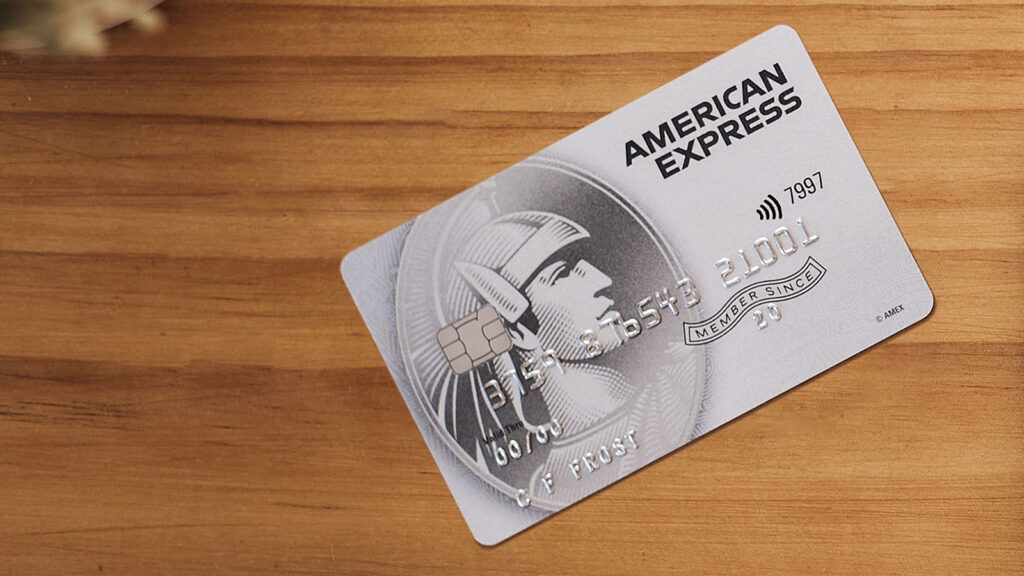




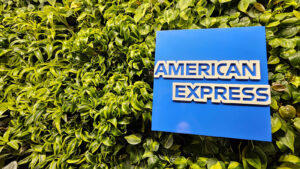
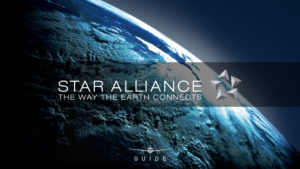
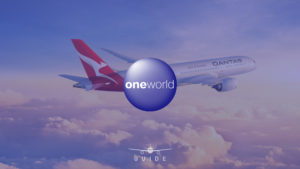
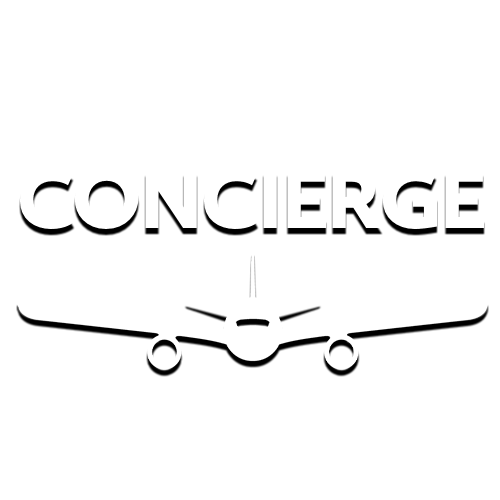
The last offer was in August 2023 – nearly two years ago…..
I would disagree re Qatar having “Very good reward seat availability” unless you are referring to just economy however..
It USED to be very good, but my experience now is that its terrible.
Singapore all the way, re business or first class reward seat availability, albeit most of it at the slightly higher advantage rate.
(This is coming from an AMEX centurion holder, with 30,000,000+ points in various programs sloshing around, and a SeatsAero Pro subscription, who goes o/s 3-4 times a year just for context…)
I know you can definitely do this with UK or US issued Amex cards but not sure if issued from Amex Australia ?
This is a very sophisticated and informative summary with no soft-soaping of the downsides.
Well done